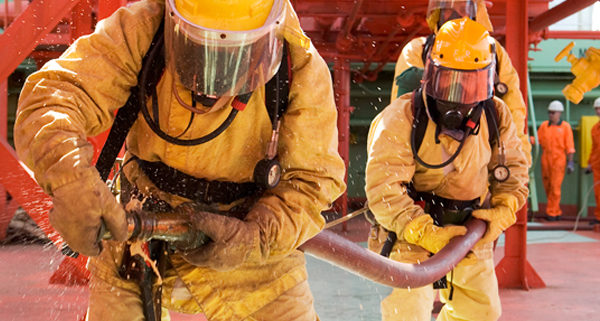Fires are very destructive hazards, yet almost all fires can be easily put out and almost all damage and loss of life can be avoided as long as the proper steps are taken to avoid their spreading. This usually includes the ready availability of firefighting equipment at the scene and the adequate education and training in fire prevention on the part of the personnel present at the time of the fire. If both these two requirements are met, fires can be put out quite easily in their initial stages, and their damage can be easily minimized.

Fire equipment is required under the law of most states to be present in workplaces and other institutions. However, by simply buying and stocking up on fire equipment, you cannot expect to be able to put out a fire in the event of one breaking out. The location of fire equipment and education on how to use them, are for example, just as essential. In general, five requirements need to be met in order to ensure the efficacy of fire protection equipment:
1. The use of fire protection equipment recognized and approved by the local and international authorities
2. The presence of the correct type of fire extinguishers (i.e. based on what causes the fire, fires are divided into six major classes; different fire extinguishers are available for each fire class, and as such, fire extinguishers should be of the type meant to deal with the fires that are expected to occur) To find out more type of fire extinguisher check this link https://www.valuefire.com.au/Fire-Extinguisher-Dandenong.html for details.
3. The distribution of fire equipment to all locations within a building evenly in adequate numbers, and their ease of access
4. Regular fire equipment servicing and maintenance
5. The proper education of staff and personnel on how to utilize the fire protection equipment
Regular servicing of fire equipment is important in order to make sure that fire equipment is in working condition when a fire breaks out. Fire extinguisher maintenance requirements usually list five steps in the regular inspections of fire extinguishers, which should be ideally carried on a monthly basis:
• Accessibility – the first step is to make sure that the fire extinguishers are in a location which is easy to access in the event of a fire. It should be easy to spot and easy to retrieve (i.e. not stationed too high up, for example).
• Seals – there are seals to ensure that the extinguisher has not been tampered with. Make sure that the safety seal and the tamper seal is intact.
• Pressure – pressure ensures the functioning of the extinguisher, and it therefore must always be at the correct pressure reading. You can verify this by checking its pressure gauge or by using a test indicator.
• Damage – damaged extinguishers are not guaranteed to function properly. Always check for any signs of damage or leakages, and immediately replace the unit if you see any such signs.
• Documentation – at the end of the inspection, it is important to note down that the extinguisher is in working condition. Most extinguishers come with a tag for this purpose.
